History of Pskov
Foundation of Pskov
According to archaeological excavations made in the northern part of the Pskov Kremlin, people already lived in this area about 2,000 years ago. The official date of the foundation of Pskov is considered to be 903 - the year of the first mention of the town in the chronicles.
Until the 12th century, Pskov was part of Kievan Rus. After the proclamation of the Novgorod Republic in 1136, Pskov came under its rule. Novgorod and Pskov had common military interests. Several times the Novgorodians and Pskovites had to defend themselves from military campaigns of the Polotsk Principality and attacks of the neighboring Baltic tribes.
In 1240, Pskov was surrounded by the troops of the Teutonic Order. When they were about to lift the siege and retreat, boyar Tverdilo secretly opened the gates of the town at night, hoping to seize power in Pskov with the help of Germans. For one year and a half, Pskov was in the occupation of the Teutonic Order. In 1242, Pskov was liberated by the army of Alexander Nevsky. The constant danger that threatened Pskov from the west forced to strengthen its fortress.
After the Battle on the Ice (1242), their common enemy, the Teutonic Order, no longer posed a threat to Novgorod. Thus, military ties between Pskov and Novgorod were ceased. In 1348, the Bolotov Treaty was signed, according to which the Novgorod Republic recognized the independence of the Pskov Republic. In 1397, the people’s veche (the highest legislative body of the Pskov Republic) adopted the first edition of the Pskov court charter - a set of laws.
More Historical Facts…
Pskov in the 15th-18th centuries
In 1425, the Pskovites began to mint their silver coins. The craft in Pskov was less developed than in Novgorod, but there were a lot of skilled craftsmen here too: blacksmiths, masons, tanners, potters, jewelers. The Pskov merchants traded with the Baltic towns and Lithuania, as well as with other Russian towns, especially with Moscow.
The people of Pskov sold flax, leather, fish, honey, wax, furs and bought salt, cloth, iron, metal products, and other goods. The development of trade in Pskov led to the creation of its own monetary system.
From 1461, power in Pskov was concentrated in the hands of Moscow governors. By the end of the 15th century, the population of Pskov was more than 30 thousand people. In 1510, Pskov formally voluntarily, but in fact under the threat of the use of military force, was annexed to the Grand Duchy of Moscow. The veche bell, the symbol of Pskov independence, was taken to Moscow.
Pskov became a western outpost on the way to Moscow. It also continued to be a major trade and craft center of the Russian state. Various branches of handicraft were developed in Pskov: metalworking, woodworking, processing of plant and animal raw materials, pottery and construction crafts. Large fairs were held in Pskov twice a year, in January and May. Pskov was an important transit point, through which flax, canvas, leather, and cloth were exported, and metals and industrial products were imported.
The Pskov Fortress played an important role in the Livonian War (1558-1583). In August 1581, Polish troops besieged Pskov. After a six-month siege and numerous unsuccessful assaults, Stephen Bathory, King of Poland and Grand Duke of Lithuania, was forced to start negotiations. His plans for a further campaign against Novgorod and Moscow were thwarted.
During the Great Northern War (1700-1721), Pskov again played an important role in the military history of Russia. In the winter of 1700-1701, the Russian regiments defeated near Narva were withdrawn to Pskov. For a time, it became the main base of the Russian army.
After this war, Pskov ceased to be an important trade and defense center of Russia. As a result of the war, the Russian borders moved far to the west, and the need for a powerful fortress disappeared. With access to the Baltic Sea, Peter I laid St. Petersburg in the Neva delta, and Russia also received the large coastal towns of Riga and Revel, where all foreign trade shifted. Pskov became an ordinary provincial town.
Pskov in the 19th-21st centuries
In 1811, the population of Pskov was about 9,300 people. During the 19th century, the role of Pskov as a town-monument grew. Over 50 churches, chapels and monasteries, medieval civil stone buildings, old dilapidated fortress walls gave the town a special beauty. In 1859, the construction of the railroad boosted the local economy and expanded trade.
At the turn of the 19th and 20th centuries, the population of Pskov was about 30 thousand people. In 1904, the first power plant was built. In 1912, tram traffic was opened. In 1915, during the First World War, the front line was only 250-300 km away from Pskov. The headquarters of the Northern Front, reserves, hospitals, and logistical services were located in Pskov. The city received tens of thousands of wounded, prisoners of war, and refugees.
On March 2, 1917, Nicholas II, the last Russian emperor, signed a manifesto abdicating the throne in favor of his younger brother Mikhail on the royal train detained at the Pskov station. During the Civil War in Russia, the power in Pskov changed several times. In 1939, the population of Pskov was 60,439 people.
From July 9, 1941 to July 23, 1944, during the Second World War, Pskov was occupied by German troops. At the time of the capture of Pskov, only 10-12 thousand civilians remained in the city. Concentration camps for Soviet prisoners of war were organized here, in which over 200 thousand people died.
On February 4, 1944, the Germans issued an evacuation order. 11 thousand people of Pskov were taken to the Baltic States and Germany, of which about 3 thousand died on the way. On July 23, 1944, the troops of the 3rd Baltic Front entered the practically empty city. Most of Pskov was destroyed, both residential and administrative, industrial buildings, architectural monuments were damaged, bridges and roads were blown up.
On August 23, 1944, Pskov became the center of the newly formed Pskov Oblast. In 1945, Pskov was included in the list of the 15 oldest cities that were subject to priority restoration. By 1950, the main stage of the restoration work was completed. From the late 1950s, Pskov began to develop as a large industrial center. On September 26, 1958, in Pskov, the first birch bark letter was found, dating from 1180-1200 years. In 1959, the population of Pskov was 81,270 people.
In 1989, its population was 203,789. With the collapse of the USSR, a large number of factories were closed, the city’s economy fell into decay. In 2010, Pskov was awarded the honorary title “City of Military Glory”. In 2019, the monuments of medieval Pskov were included in the UNESCO World Heritage List.
Picturesque old churches of Pskov
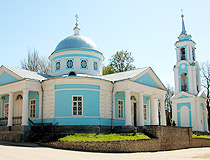
Church of the Assumption of Our Lady in Pskov
Author: Gavrilov Alexandr
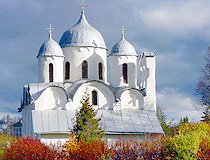
Cathedral of the Nativity of John the Baptist in Pskov
Author: Oleg Alexandrov
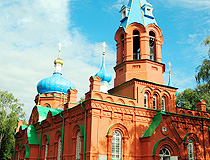
Church of St. Alexander Nevsky in Pskov
Author: Elena Zakamaldina
Pskov - Features
Pskov is one of the most beautiful and old cities in Russia, which has preserved a lot of unique architectural monuments of the 12th-16th centuries. It is located in the north-west of the country in the center of the Pskov lowland. There are two rivers flowing in the city: the Pskova and Velikaya.
The name of the city is associated with the Pskova River. There are different versions of the origin of the name of the city and the river. According to one of them (Slavic origin), the name Pskov (Pleskov, Plskov) comes from the Old Russian word “ples” - a part of the river between two bends - or from the word “pesok” (“sand”).
The climate of Pskov is transitional from moderately maritime to moderately continental, with mild winters and warm summers. The average temperature in January is minus 6.3 degrees Celsius, in July - plus 19.2 degrees Celsius.
Distances from Pskov to the nearest large cities: St. Petersburg (290 km), Riga (280 km), Tallinn (330 km), Moscow (730 km). Pskov is a large transport junction, which is easily accessible both by rail and by highway. Buses and minibuses are used as the main public transport in Pskov.
Today’s coat of arms of Pskov is based on the historical coat of arms of the city. The leopard symbolizes the readiness to meet enemies fully armed, the courage of the Pskovites. The blessing hand means the protection of the heavenly forces enhancing the defensive potential of the leopard.
Pskov is a unique old Russian city. Some of the oldest monuments of fresco painting in Russia have been preserved here. Monuments of old Pskov are included in the UNESCO World Heritage List. The Pskov Kremlin, medieval chambers of merchants, graceful Russian churches, monasteries standing on the steep banks of the rivers, defensive towers, interesting museums and monuments - all this creates a unique look of Pskov and attracts a lot of tourists.
Only within the borders of Pskov there are more than 50 churches, mainly of the 14th-15th centuries. The Pskov land also traditionally attracts a lot of pilgrims. Practically in all historical buildings of Pskov you can find museum expositions.
Excursions that you can buy in Pskov (there are about 7 sales points for excursions in the city, two of which are located in the Pskov Kremlin area) or in advance through a travel agency, are divided into three main types - historical (for example, “Princess Olga and the Pskov Land”), military (mainly about the events of the Second World War), and religious (the monasteries of Pskov and the surrounding area).
Today, old crafts are revived by Pskov craftsmen. Thanks to their knowledge and skills, original souvenirs with Pskov themes and motives are created. Traditional Pskov crafts are hand forging (forged candlesticks, nails, staples, and numerous other blacksmith products) and ceramics (pots, mugs, jars, whistles, handmade toys). All of these can be found in local gift shops.
Main Attractions of Pskov
The Pskov Krom (Kremlin) - the historic and architectural center of Pskov, one of the symbols of the city, a great example of old Russian medieval defensive architecture located at the confluence of the Pskova River into the Velikaya River. On an area of 3 hectares, you can see a large number of architectural monuments including the monumental 78 meters high Trinity Cathedral (1699) - the only large church in Pskov that has survived to this day.
The difference between the Pskov Kremlin and the fortresses of Tver, Moscow, Smolensk, and other Russian cities is that it was not influenced by Italian architecture. The fortification was built in a brutal, solid style, characteristic of the independent Pskov Republic of the 14th-16th centuries. The height of the walls is 6-8 meters, the length - about 1 km.
On the territory of the Pskov Kremlin there is the only administrative building of the 17th century preserved in its original form - the Order Chambers (1693). Today, this federal cultural heritage site is used as an exhibition and cultural center of the Pskov Historical, Artistic and Architectural Museum-Reserve. The expositions recreate the atmosphere in which medieval Russian administrative work was carried out.
Pogankin Chambers - a stone residential, warehouse and industrial building constructed in the 1670s, a monument of history and culture of federal significance. Inside you can find several exhibitions including a collection of icons created in Pskov in the 14th-17th centuries. The Pskov school of painting is recognized as a completely original artistic phenomenon of old Russia. There is also a collection of silverware here. Nekrasova Street, 7.
Gremyachaya Tower (1525) - the tallest stone tower in Pskov (29 meters) and one of the symbols of the city. A lot of urban legends are associated with this tower. The most famous one is about the prince’s daughter walled up in it. Only those who are not afraid to spend 12 consecutive nights in the tower reading the Psalter can free her. In addition to the princess, the brave person will receive barrels of gold, the ringing of which is heard by the Pskovites at night here. Gremyachaya Street, 8.
Menshikov Chambers - a complex of buildings of the 17th century that was the ancestral home of Semyon Menshikov, the headman and richest merchant of the Pskov land. The snow-white architectural ensemble is made of limestone and consists of three-storey and two-storey buildings connected by underground galleries. Today, there are souvenir shops selling ceramics, thematic books, as well as a pottery museum here. There is a permanent exhibition of contemporary Pskov artists in one of the buildings. Sovetskaya Street, 50.
Mirozhsky Monastery - a monastery complex of the 12th century located on the bank of the Velikaya River. It is famous for its unique preserved pre-Mongol frescoes, which are open to the public only in dry weather. In the Middle Ages, this monastery was the cultural center of Pskov. Mirozhskaya Embankment, 2.
Arboretum Mirozhsky Park - a great place to walk located near the Mirozhsky Monastery. The most beautiful place in the park is a pond with an artificial island where wild ducks nest all year round. Yubileynaya Street, 1?.
Cathedral of the Nativity of John the Baptist - a picturesque church located on the left bank of the Velikaya River, opposite the Pskov Kremlin. The appearance of the building strikes with restraint and monumental simplicity, contrasting with most of the Pskov churches. Details of the external decor are practically absent. For several centuries it was the burial vault of the Pskov princesses. Over the centuries, the soil around the church rose. Today, its floor is almost one meter below the ground level. Maksima Gorkogo Street, 1.
Church of the Epiphany - one of the most famous churches in Pskov. This picturesque asymmetric monument of history and culture of federal significance of the 15th-16th centuries is located on the right bank of the Pskova River. Gertsena Street, 7.
Apartment-museum of Vladimir Lenin. The museum is located in the apartment building of the merchant P. Chernov on the former Arkhangelskaya Street (today, Lenina Street, 3), on the third floor. From March to May 1900, Vladimir Ulyanov (Lenin) rented a room here. In 2001, the museum became part of the Pskov Museum-Reserve and was supplemented with exhibits about the life of the Pskov region and Pskov in the late 19th - early 20th centuries.
Monument to the Pskov Paratroopers (The Canopy). On February 29, 2000, at the height of the Second Chechen War, in the Argun Gorge, an armed clash took place between large forces of Chechen separatists retreating from the encirclement and a detachment of Russian paratroopers made up mainly of the 6th company of the 2nd battalion of the 104th paratrooper regiment of the 76th Pskov division.
In the desperate battle, the defending paratroopers displayed heroism, but the opposing forces were too strong. Almost all of the paratroopers were killed in action. The dramatic course and outcome of the battle caused a significant resonance in Russian society. For this feat, 22 of them (21 - posthumous) were awarded the title of Hero of Russia, 69 soldiers and officers were awarded the Orders of Courage (63 - posthumous). The monument looks like a snow-white metal canopy of a parachute over a pedestal stylized as a mountain peak. Leningradskoye Highway, 222.
Mikhailovskoye Museum-Reserve - a memorial complex and an extensive park area located about 115 km away from Pskov, a federal cultural heritage site dedicated to Alexander Pushkin, one of the greatest Russian poets. The grave of Alexander Pushkin is located on its territory. There are several estates with parks, estates of the poet’s relatives and friends, museums, remains of old settlements, picturesque meadows and lakes.


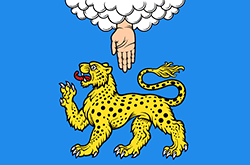
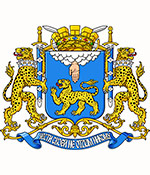
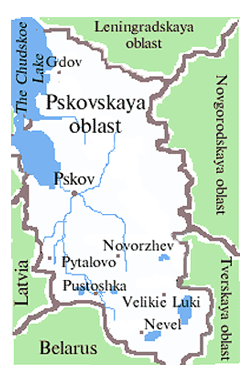



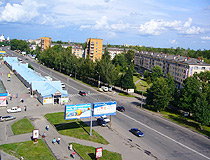
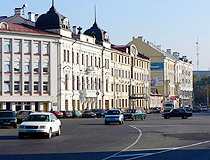
The comments of our visitors